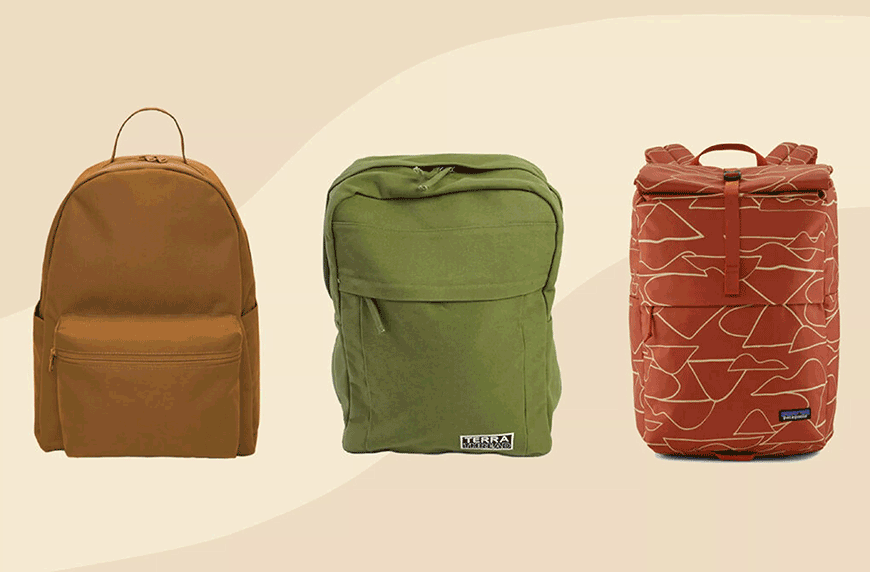5 Simple Ways to Head Back to School Sustainably
Have a sustainable back-to-school season with these tips and tricks that reduce waste, save money, and protect the planet.

Published
Back-to-school shopping season is underway. This year, families are predicted to spend an average of $597 per child, making it the second largest yearly spend for families, right behind the holidays.
With that shopping comes with a lot of waste. Typical back-to-school essentials include clothing from fast fashion brands, stacks of new textbooks and notebooks, plastic school supplies, and more. The good news is there are simple steps you can take to make this school year your most planet-friendly yet.
Whether you're a college student moving away from home for the first time or a parent getting kiddos ready for a new grade, here are some tips and tricks that will kickstart your year on a sustainable note.
How to Have a Sustainable Back-to-School Season
1. Don't Buy What You Don't Need

Don’t buy things you don’t need. Say no to the locker chandeliers and the cheap markers that run out of ink in a week. These items are often impulse buys and usually don’t last very long. It’s easy to get swept up in new trends and sales, but staying away from plastic “fashionable” fad items is the sustainable thing to do.
Before buying something ask yourself, “Do I really need this?” or “Am I still going to have/want this in six months?” Chances are the answer is “No.” Doing this also will help you start building stepping stones to reducing what you use in your everyday life.
2. Look at What You Already Have Before Buying New

Every school year, you're given a list of must-buys. This year, look around your home before heading to the store—you might be surprised at how much you already have and can use, saving the planet and your bank account.
"Look at what you already have so you're not duplicating things," says Laura Wittig, founder and CEO of Brightly. "A lot of us have an abundance of things."
Instead of buying new pencils or pens, you likely have a handful in your junk drawer. Instead of getting a new notebook, tear out and recycle the used pages in a half-written-in option stuffed in your desk drawer.

3. Reuse, Reuse, Reuse

Using items until they cannot be used anymore makes sure that the item is fully utilized. This doesn't waste the materials in the items or the materials used to run the factory that made the items. It also keeps the items out of landfills and therefore helps reduce the number of things we throw away.
Keep in mind items do not have to be reused in the way they’re intended to be used so try to find creative ways to repurpose certain items. Maybe an old pencil case can be used as a locker room essentials kit for after gym class? There are no rules for reusing items!
4. Buy Secondhand

If you do need to buy something, consider buying it secondhand. Whether it be clothing, electronics, or textbooks, secondhand shopping is cheaper and more sustainable than buying things new.
Like reusing items, buying second-hand extends the life of an item so it’s used to its full potential. In addition to reducing waste, buying secondhand also can save you plenty of money.
Recycling electronics, for instance, can be very difficult so most people just throw them away. This is incredibly harmful to the environment. Buying electronics secondhand reduces the amount of e-waste that ends up in landfills.
5. Support Sustainable Companies

When buying secondhand isn't an option, try to find companies where sustainability is an important part of their practice and production. Look for sustainable school supplies, including backpacks, lunch bags, and even notebooks made of stone.
"The fun thing about the stone papers is it's literally made from stones," Wittig says. "You can't tell like the paper itself; it's little maybe a little bit thick. But it seems like regular paper and it's recyclable, which is really cool."

Start a Butterfly Garden: 10 Plants and Flowers to Start With
Monarchs and other butterflies rely on a number of plants and flowers for survival. Create your own butterfly garden with these blooms.

Squirrels and Other Animals Are Splooting in the Heat (and We Totally Get It)
Across the country, rising temperatures are finding squirrels and more splayed out on the ground—a position known as splooting.

Sustainable Photography Guide: 5 Simple Changes to Make Today
While photography is a relatively low-impact practice, it can be made even more sustainable with a few extra considerations.

